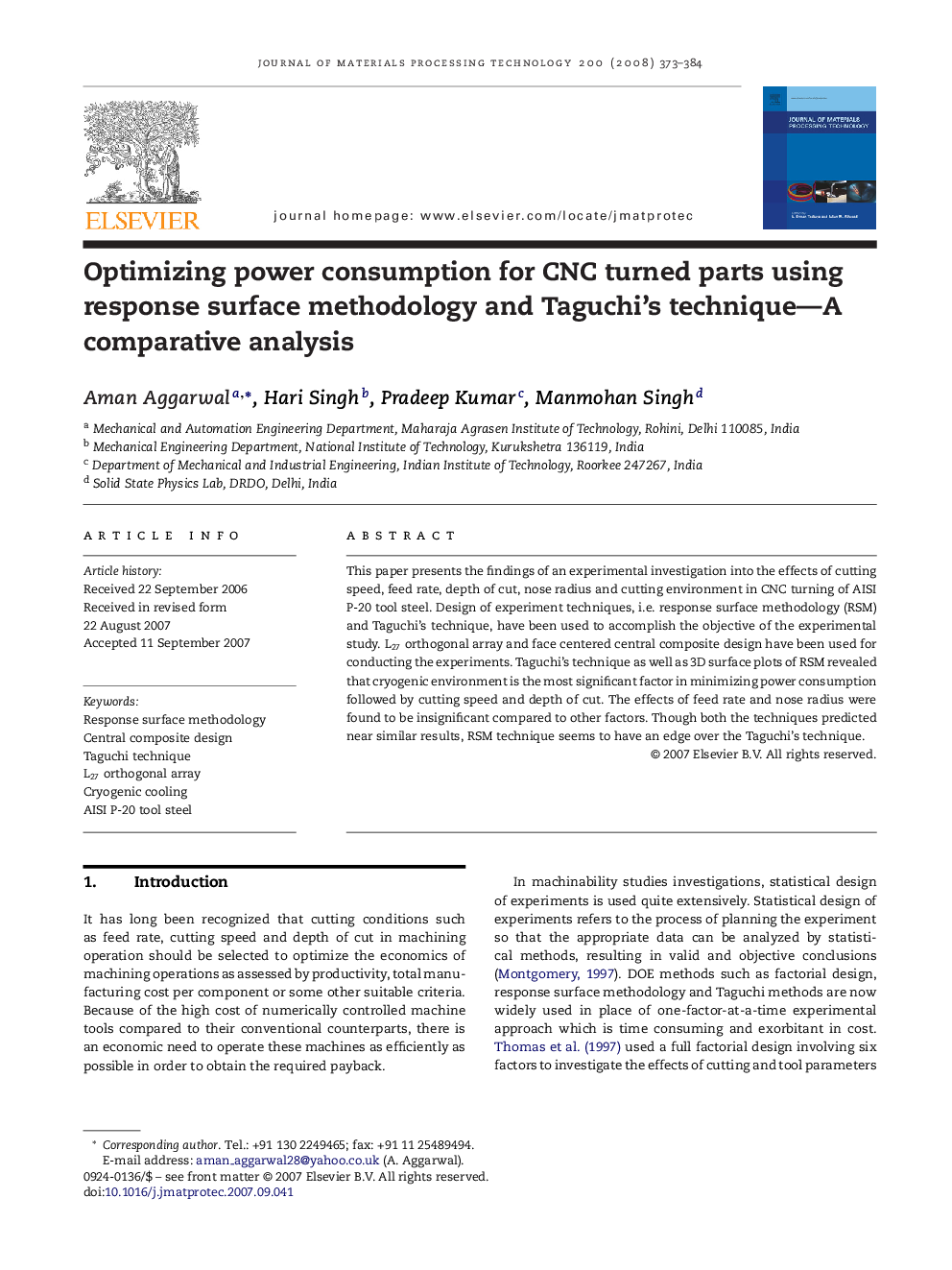| Article ID | Journal | Published Year | Pages | File Type |
|---|---|---|---|---|
| 798739 | Journal of Materials Processing Technology | 2008 | 12 Pages |
This paper presents the findings of an experimental investigation into the effects of cutting speed, feed rate, depth of cut, nose radius and cutting environment in CNC turning of AISI P-20 tool steel. Design of experiment techniques, i.e. response surface methodology (RSM) and Taguchi's technique, have been used to accomplish the objective of the experimental study. L27 orthogonal array and face centered central composite design have been used for conducting the experiments. Taguchi's technique as well as 3D surface plots of RSM revealed that cryogenic environment is the most significant factor in minimizing power consumption followed by cutting speed and depth of cut. The effects of feed rate and nose radius were found to be insignificant compared to other factors. Though both the techniques predicted near similar results, RSM technique seems to have an edge over the Taguchi's technique.
